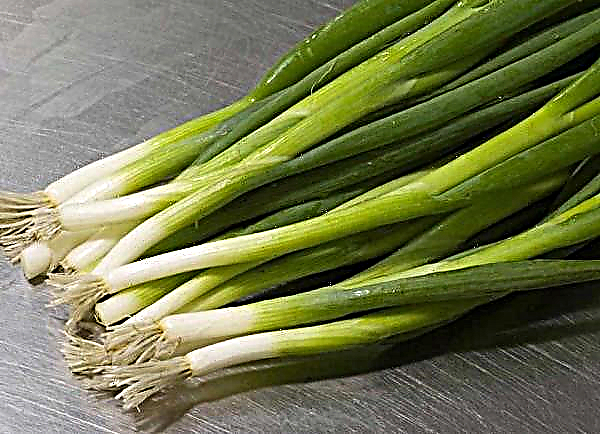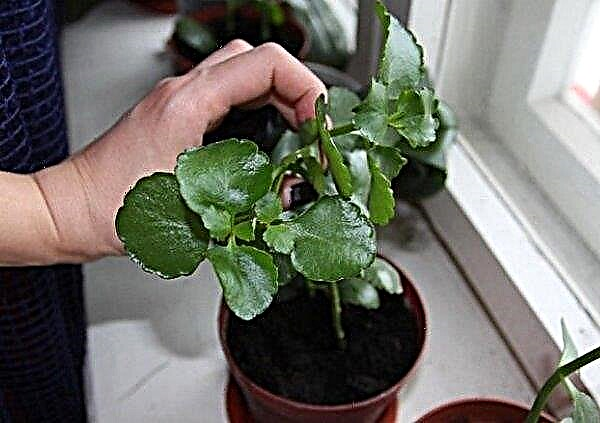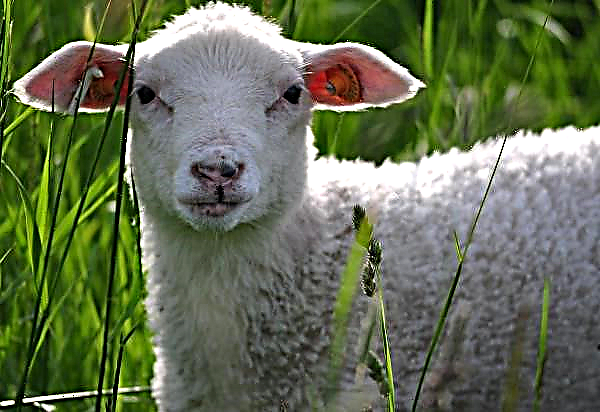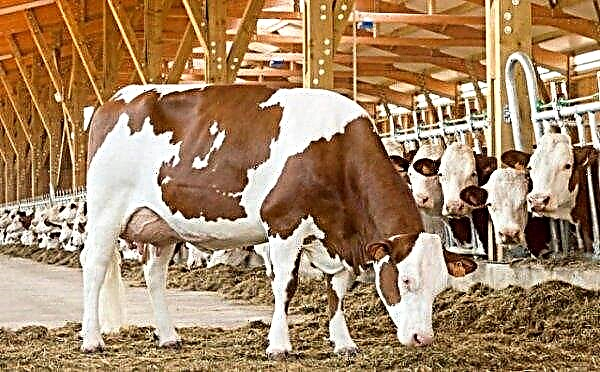Today, one of the most common types of hives is the 12-frame one. Despite criticism from some beekeepers and reproaches for the lack of modernization, its popularity does not fall. Today you will learn how to build a dwelling for bees from 12 frames yourself.
Description and characteristic of 12 frame hive
In the nineteenth century. Charles Dadan, a native of France, who lives in the USA, based on the achievements of other beekeepers, developed a hive consisting of 10 frames 47 × 30 cm in size, which increased the productivity of the uterus. A little later, the Swiss Johann Blatt discovered that in such a beehive, bees do not tolerate winter, there is little space left for honey. He worked on improving the Dadanov hive, and as a result, a 12-frame dwelling for bees of smaller width (43.5 cm) was born. Its weight is about 24 kg without a magazine; a two-hive hive will weigh about 33 kg.
Although officially it bears the name Dadan-Blatt, the most commonly used abridged version is Dadan or Dadanov hive.
Depending on the location, the hive is distinguished:
- vertical;
- horizontal (sunbed).
Depending on the number of cases:
- multihull;
- single hull.
Did you know? At the entrance to the hive, guard bees are on duty, they control the smell of bees flying in there and do not let strangers out. Although a bee caught in an emergency (thunderstorm, close sunset, etc.), you may ask for an overnight stay.
If you install several buildings on top of each other, then such a dadan will be called multi-case.
Depending on the number of walls, there is a hive:
- single wall;
- double-walled.
Let's consider these types in more detail.
Single wall hive
The bee dwelling, consisting of 4 walls, frames, diaphragms, store frames, roof, bottom is called a single-wall hive. They are easier to manufacture, they have less weight, so they are easier to rearrange.
Double-walled hive
Dadan, whose case consists of double walls, is called double-walled.
Its features:
- Used in regions with frosty winters.
- Between 2 walls for insulation, straw, needles, moss, sawdust are covered.
- As a rule, the floor is not removable, but those who wish can nail down from the bottom of the plank walls so that the insulation does not spill out. In this case, fixing the floor is carried out with screws.
- Case height - 34 cm.
- So that the insulation does not dampen from condensation, the inner wall should be thicker than the outer.
- In order to install a pillow inside for insulation, the inner walls should be 12-15 cm shorter than the outer ones.
- Letok has a latch.
Important! Heat loss in a single-wall hive is 2.1 cal / hour, double-walled - 0.65 cal / hour.
Advantages and disadvantages of the 12 frame hive
- Keeping bees in dadan has these advantages:
- Large enough for a strong family.
- There are no problems with removing / replacing frames.
- This hive is an example of the lack of difficulty in use.
- It’s easier to collect honey.
- Reduced risk of swarming bees.
- Will not lose characteristics during 25 years of use on the farm.
- Simplification of care for bees is an attractive moment for beginner beekeepers.
- Suitable for wintering 2 families, if you install a partition between them.
- Due to its high prevalence, it has no problems with spare parts.
- You can install stores or additional buildings and thereby increase the amount of honey.
- Suitable for use in areas with reduced honey collection.
- The disadvantages of this content of bees:
- Not suitable for use in large beekeeping farms, as the size of the frame increases the complexity of caring for the hive.
- Modern hives have more advantages in terms of practicality of use.
The design and method of manufacturing a double-walled hive
First of all, you need to make a drawing.
The walls have a thickness of about 4 cm and form a body, the inner size of which:
- length and width of 45 cm;
- height 32 cm.
Did you know? If 1 bee remembers the smell, she can teach him relatives from her hive, this feature is used by scientists from the USA who teach bees to look for explosives.
The dimensions of the frames are:
- length 43.5 cm;
- height 30 cm;
- thickness 2.5 cm.
Depending on whether it is a vertical hive or a sunbed, the length can become height. The upper frame of the strip is approximately 2 cm longer than the lower one and is inserted into the recesses in the walls of the housing. Each frame may contain about 3.5 kg of honey. During the installation of the frames, the detuned ones and the framework with the wax alternate.
The diaphragm is a shutter made of boards with a thickness of not more than 1 cm, which serve to protect the swarm from the cold.
A store is an extension of ¼ the height of the hive (about 16 cm), consists of store frames (half frames) of 14.5 × 43.5 cm, the weight of the store is about 6 kg. It is installed on top of the main frames, leaving about 1 cm of space, in order to increase the amount of honey. There may be several such extensions.
Important! The design of the dadan allows you to install 12 half-frames in the store, but experts recommend not doing more than 10.
To protect the bees from the weather, a roof is installed on top, which happens:
- flat;
- single slope;
- gable.
The floor is made removable. Between it and the frames leave a free space of 1.5 cm with the help of strips of this height.
Material selection and preparation
The hive is made of wood or polyurethane foam (PPU), the drawings will not differ. The latter option is more modern and light.
It is better to use wood of such species:
- willow;
- Linden;
- Pine;
- spruce.
A thickness of 40 mm will be required on the hull and bottom, and 15 mm on the roof. To fix each other with a cutter in the walls, it is necessary to cut the grooves. In the walls along the entire width, grooves of 2 × 1 cm are made to insert frames into them. From the bottom, grooves are made in order to fix the removable floor. All walls are the same size, only in the front wall you need to make a notch.
For the manufacture of the bottom, instead of the board, you can take the shield with the bars attached to it.
For insulation, a roof cover is installed:
- for a single-wall hive of 4 pieces of board 2 cm thick 53.2 × 10 cm in size;
- for double-walled, the dimensions are 82 × 57.2 × 9 cm.
The roof consists of:
- 2 boards of the main harness;
- 2 roof boards, which are 3.5 cm longer than the main harness.
It is covered with sheet iron. Most often they make a pitched roof, although a flat one makes it possible to install hives on top of each other during transportation.
Strap Making
For the manufacture of shields, strips of 0.4 × 1.8 cm in size are cut, which are interconnected through cut-out grooves, they are lubricated with glue. The main requirement is a snug fit to each other. The number of slats should be such that 5 shields are obtained: 4 on the roof, 1 on the bottom.
Trims for the floor are required in the size of 45 × 15 cm in the amount of 3 pcs., The missing 4 strap forms a notch.
Hive collection
The fixing of the elements is given to each other by means of glue and nails. The fully assembled beehive is stained with acrylic paint and allowed to dry.
Video: Production and collection of the Dadan hive
Before painting, you need to carry out preparatory work:
- tar if the wood contains resin;
- close up cracks;
- putty;
- to sand.
Excess resin is removed by a solution of soda ash heated to 50 ° C, applied with a brush 2-3 times. Turpentine is also used. The remnants of these substances must be washed off with warm water.
Drilling tap holes and ventilation
For a single-wall dad, the missing 4 plank serves as a flap; its width can be increased or decreased by inserts made of wood. The floor should protrude 5 cm forward to form an arrival board.
Important! So that the bees with the load do not experience inconvenience when landing, the arrival board is recommended to be increased.
Another 1 year is drilled in the upper part of the body, its diameter is about 3 cm. In a double-walled dadan, the lower let is covered with valves.
The ventilation holes are drilled 1 in each of the roofing boards in the form of a circle or slit on which a metal mesh is mounted.
Use in the apiary
In autumn or early spring, a place in the shade is chosen for the hive, where half-time is attached. The beehives are turned by a notch towards the southwest and placed in rows, in a checkerboard pattern or 3-4 pieces in groups, but so that their notches are not directed towards each other.
Useful tips for beekeepers on making a beehive
To make the beehive satisfy all the requirements, it is recommended:
- Give preference to wood containing a small amount of resin.
- For the manufacture, use the remnants of the boards from other work on the farm or look for shops where you can buy such remnants. This will significantly reduce the cost of dadan.
- Stick to the drawn outline during construction.
- Do not forget about ventilation.
- Do not save on building paint; chemicals contained can destroy the bee colony.
- Paint should be designed for facade work.
- After painting and drying, be sure to ventilate the house well before populating the bees.
- Do not increase the thickness of the frames, otherwise excessively elongated cells will not allow the young to breed, and this will adversely affect the amount of honey collected.
Thus, you can make one of the most popular types of hives - the 12-frame dadan yourself, if you use our tips. To do this, you need a minimum of skills, a small number of tools, the remains of the boards. The advantages of such a hive were appreciated by a large number of beekeepers, you may be among them.












